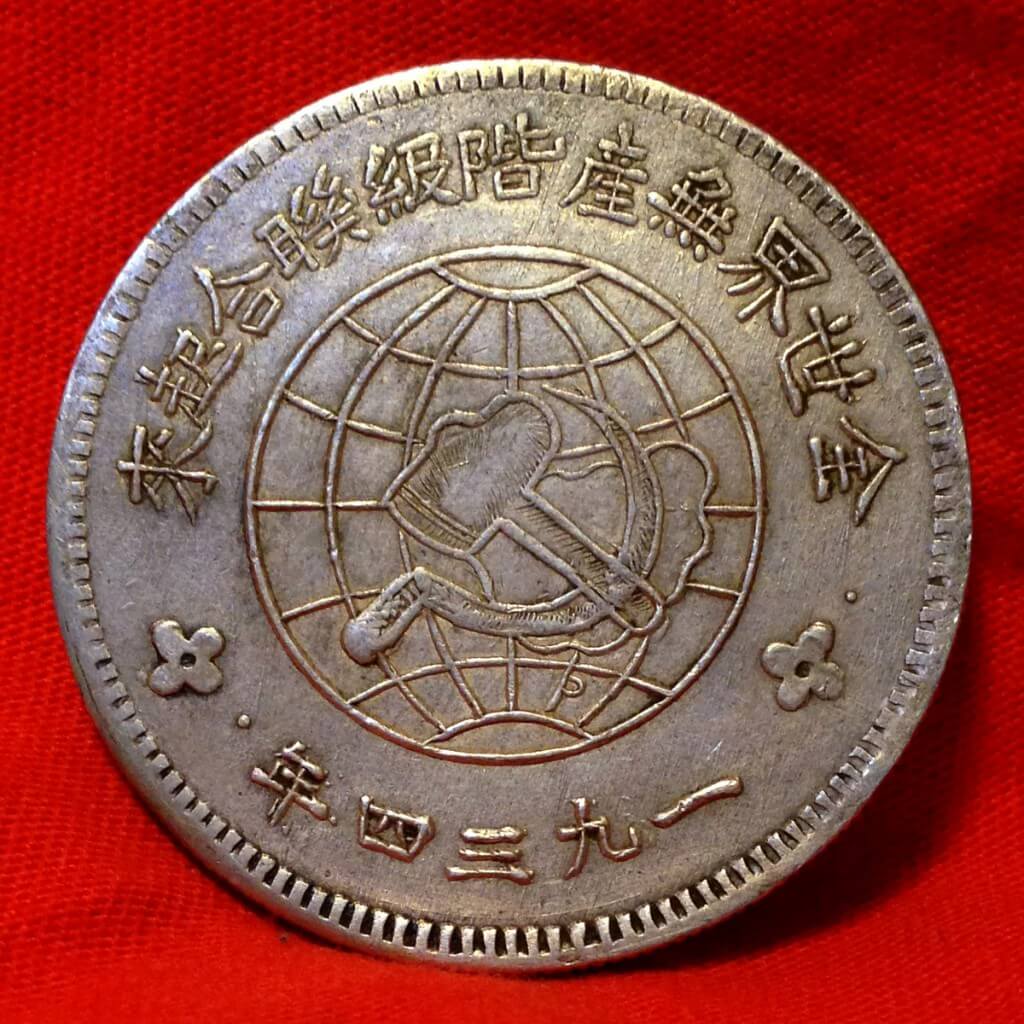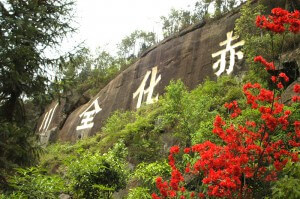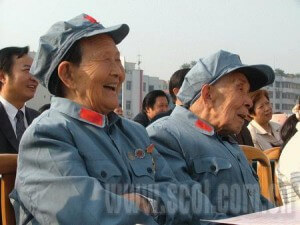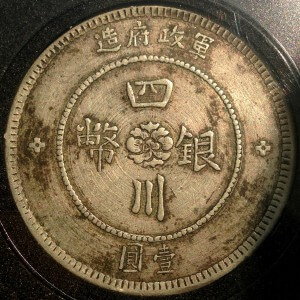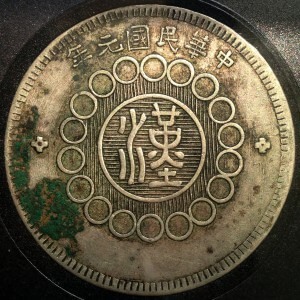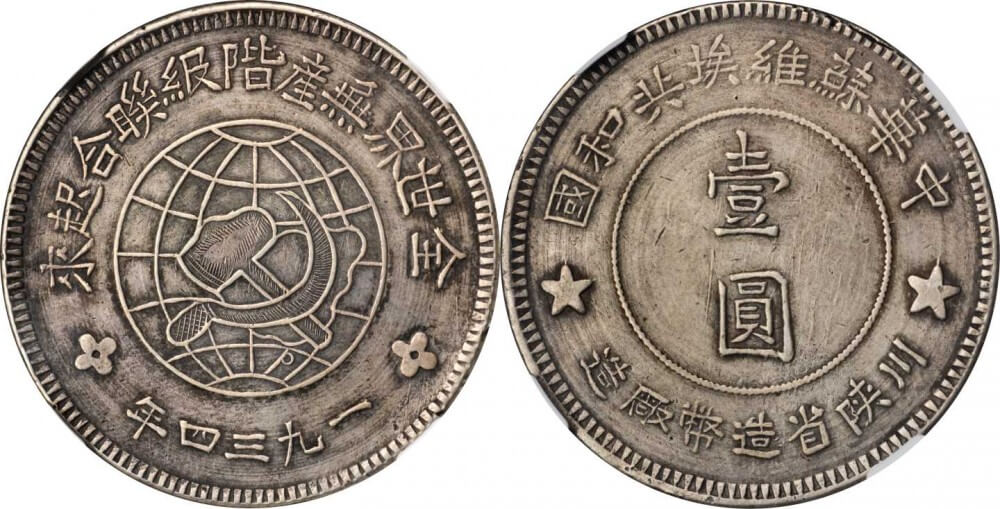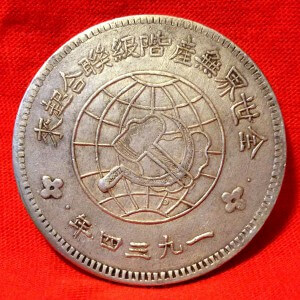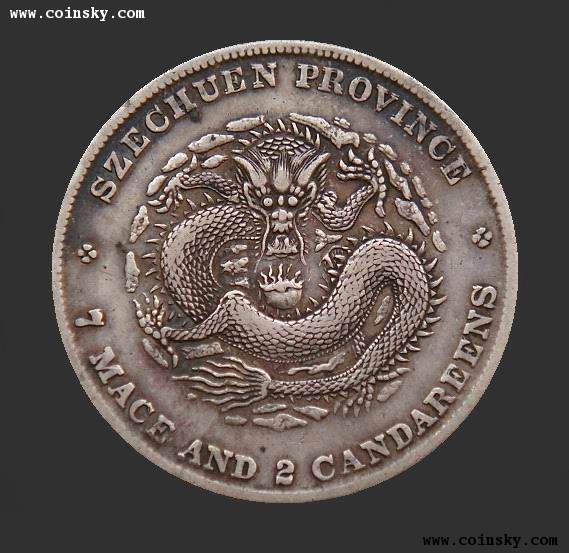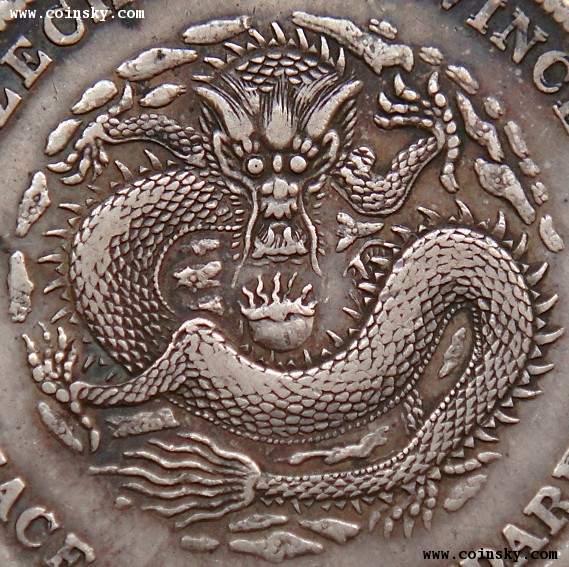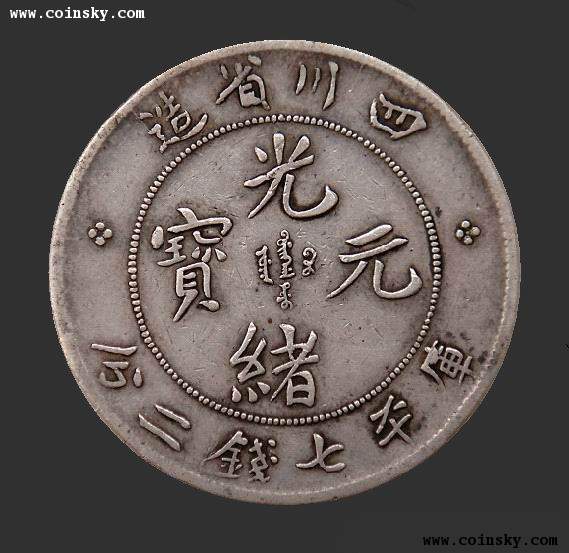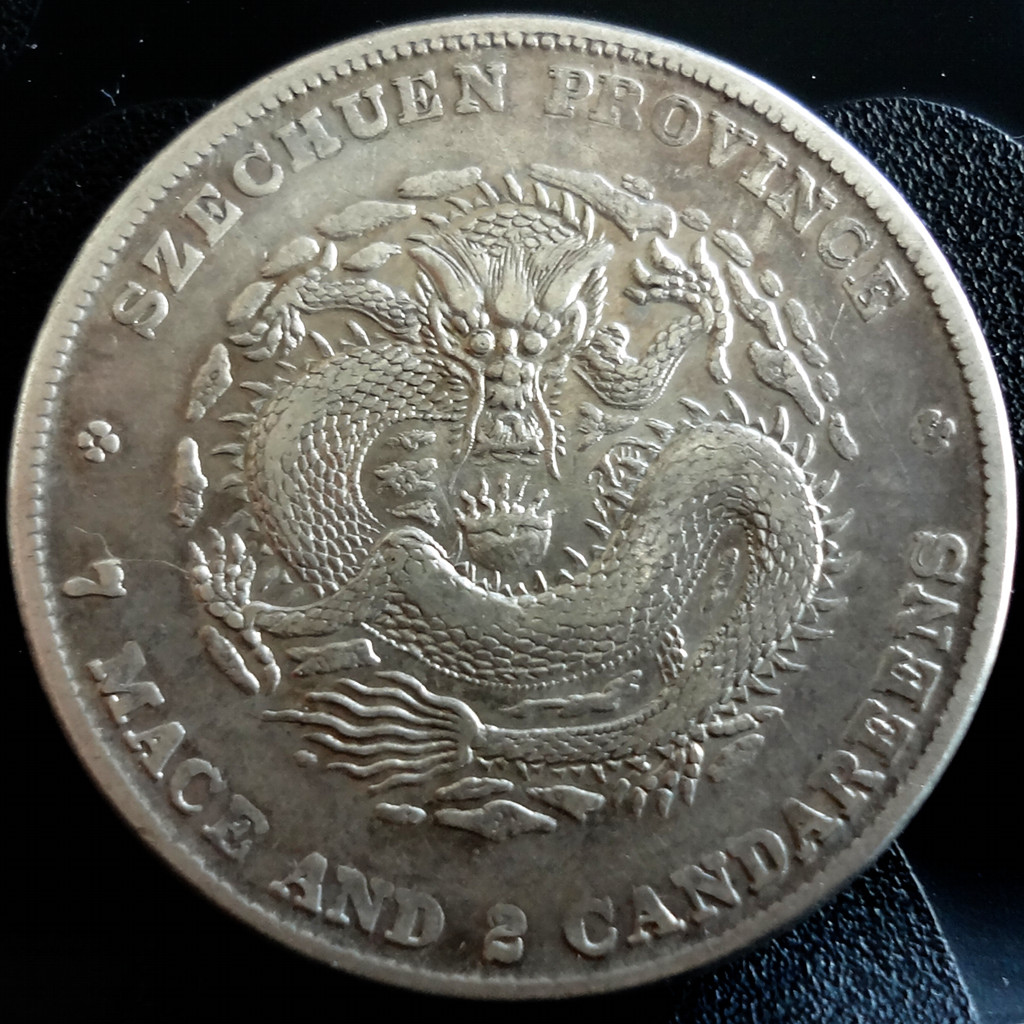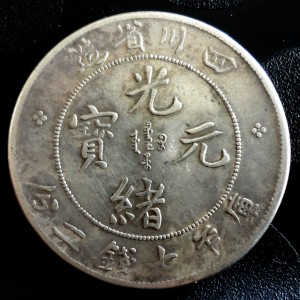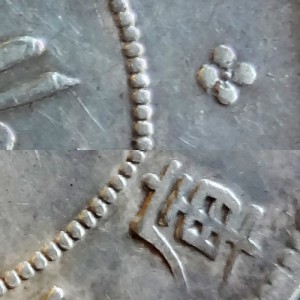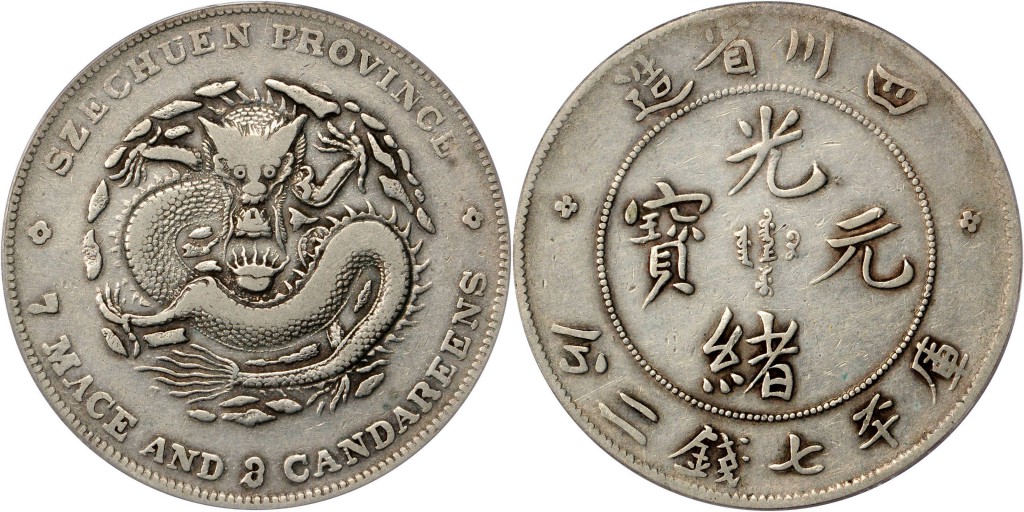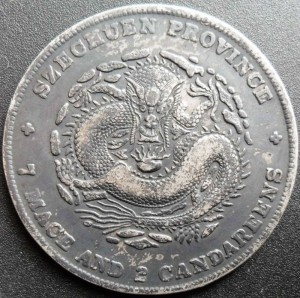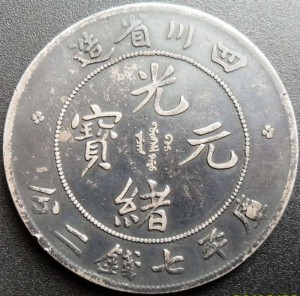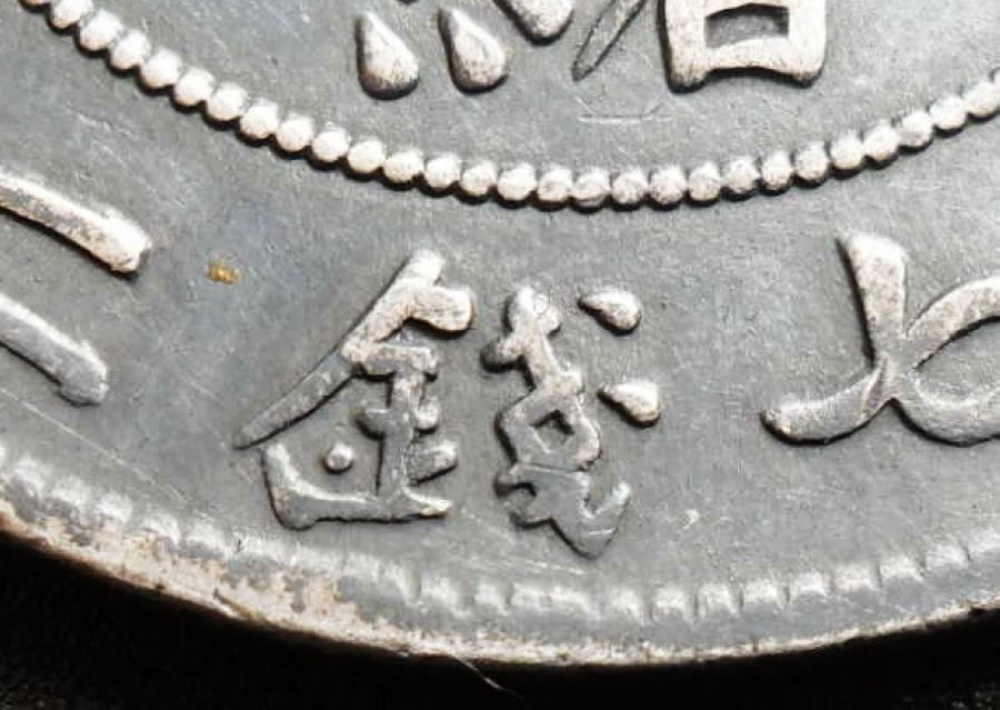In Winter 1932 the Fourth Front Army of the Chinese Workers’ and Peasants’ Red Army, mostly composed of survivors of the Nanchang Uprising and armed peasants from the Hunan province, escaped Chiang Kai-Shek’s siege of the Hupeh/Honan/Anhwei revolutionary base and entered northern Sichuan across Mt. Bashan. By early 1933, the Red Army controlled a 15,000 square kilometers area centered around the cities of Bazhong, Guangyuan and Nanchong, populated by over one million souls.
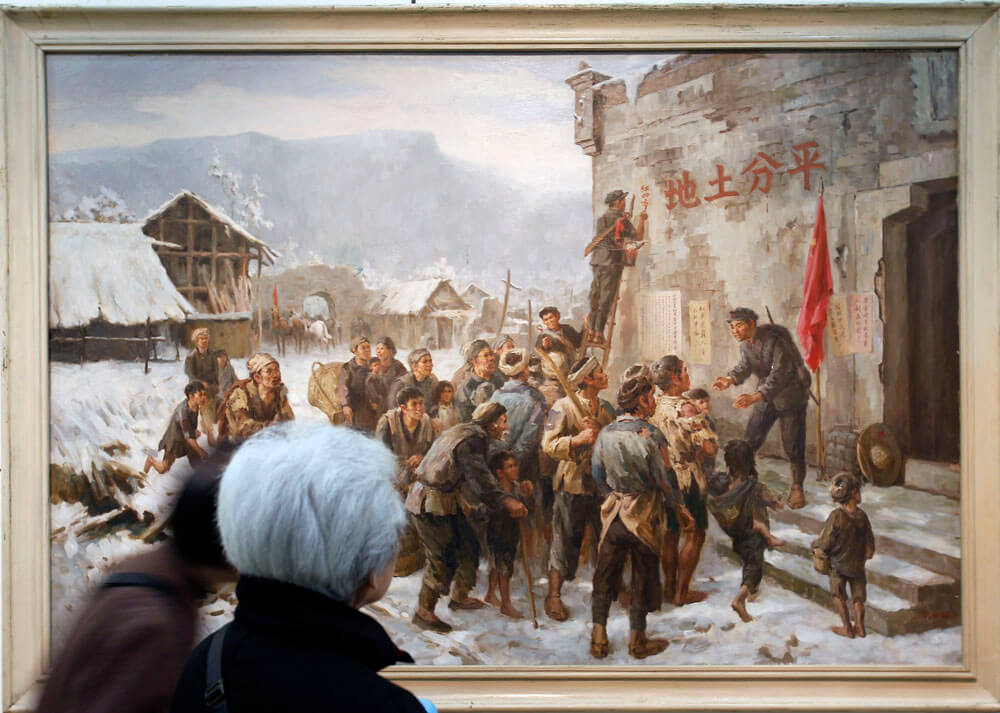
A 92-year-old woman looks at “The Red Army enters Northern Sichuan”, a 1957 painting from LIU Guoshu
Eighty years later, I was sipping tea in Nanchong while listening to my friend YI Chuanbi – his pet iguana perched on his shoulder – telling me of an old man he knew who had a perfectly preserved Szechuan-Shensi Soviet dollar and (for the right price) would be amenable to sell. Chinese soviet dollars are the thing of legend: their rarity and historical significance caused them to be highly sought after by collectors very early on. A Chinese Soviet dollar in uncirculated condition was already worth 1,000 yuan in the early 1980s, when YI was selling Szechuan dragon dollars 8 yuan apiece to buy games for his video game arcade business. Since then those prices have risen 20,000%, a performance comparable to AAPL shares during the same period!
Soviet dollars are in a class apart from other Chinese coins: they are revolutionary relics, just like the stone-carved slogans that the Fourth Army left in the Szechuan province. For many older Sichuan men and women, they are a direct connection to the heady days of their youth.
The Szechuan-Shensi Soviet dollar was struck in 1934 with hand-crafted dies at the Red Army Mint built in the Wangcang county (旺苍县) of Guangyuan (广元市), and were as much an instrument of propaganda as an instrument of payment. That politically charged currency, stamped with the symbol of the hammer and sickle spreading all over China and surrounded by the famous rallying cry “proletariats of the world, unite!“, was obviously banned and very dangerous to own in the territories controlled by the KMT or the Sichuan clique. For use in enemy territory, the Red Army Mint issued counterfeit Szechuan Military Government dollars instead. These fake coins, made with great care but with the same crude techniques used to produce the Soviet dollars, are easily identified by their hand-carved security edge and the concentric grooves on their surfaces.
(the Red Army version of the Szechuan 1912 Military dollar is worth $3,000 to $5,000 USD in XF condition)
Most of these Red Szechuan Military dollars and Soviet coins were melted down into less dangerous shapes after the Fourth Army retreated in March 1935 to join the Long March and the nationalist forces regained control of the area. The few remaining coins were often kept hidden, either due to the risk they posed to their owners, or out of the old-fashioned concern that the fewer people know of your valuable possessions, the better!
This combination of high desirability and elusiveness created ideal conditions for modern counterfeiters. Until smartphones with good camera became ubiquitous in China, very few collectors had access to anything better than low resolution pictures of genuine Soviet dollars, and even fewer had the opportunity to examine one “hands-on”.
Even for collectors with deep pockets, it is therefore difficult to find a Soviet dollar both in excellent condition and with a respectable pedigree, made crucial by the large number of very high quality fake coins circulating on the market. You can now better imagine my excitation when YI Chuanbi first told me of this opportunity!
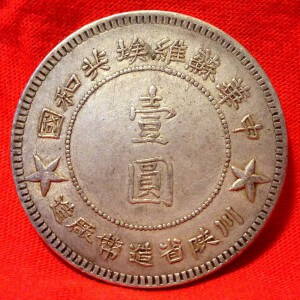
Szechuan-Shensi Soviet 1934 dollar (Kann 808 – Y-513 – L&M 891) (reverse) (graded AU55 by NGC)
In the end I did not succeed in buying that old man’s Soviet dollar in 2012, but after three years I finally managed to catch another one, pictured above. This Szechuan-Shensi Soviet dollar was circulated but is exceptionally well-preserved, with softly lustrous surfaces. More importantly, it has an unimpeachable pedigree: it is the plate coin for the “Crab pincer” variety (CSSB-Y2-4-02) in 《川陕革命根据地货币图录》, one of the most detailed books on the money of communist China.
It is a strange feeling to look at this heavy coin in the palm of my hand and think of the courageous men and women who carefully engraved dies and minted coins eighty years ago, doing their best despite the hardships and terrible conditions, with the hope of somehow contributing to change the world. Chinese Soviet dollars are truly a class apart.
Navigating the more than 200 known varieties of the Szechuan dollar can be intimidating; the erudition required makes the Szechuen 7 mace and 2 candareens the darling of sophisticated Chinese coins collectors. As the number of advanced collectors increase and knowledge about the rarest varieties becomes more widespread, their value have dramatically increased in the past two years and Szechuan dollars in desirable condition have already all but vanished from the market. The Szechuan Narrow Face Dragon, with a doubled die error on the obverse (see below), is one of the hottest varieties.
I had mentionned in an earlier post that this type had even rarer subvarieties, one of which I recently acquired an interesting specimen graded by PCGS. At first glance, both coins look very similar. The gaunt dragon has the same ragged one-eyed face that makes its charm, the doubling on the English legend characteristic of this type is still there as well.
The difference is indeed on the reverse side of the coin (see below). The attentive reader will notice that the top the “庫” character on the reverse is very different, as if the brush of the calligrapher let out an ink blot drawing it. The bottom “省” character is also maculated with a similar silver ink blotch. The full name of this very rare variety is 剑毛龙无头车花心点粘笔庫, or literally “Sharp spines dragon with decapitated Chē, rosette with dot, and smudged Kù” in English; what a nice demonstration of the compactness and expressivity of the Chinese language!
The image of a gauche scribe making ink blots is more romantic than the hard, mechanical reality: this kind of filling is called a “die chip” error. Damage to a small portion of the die or weakness in its design can lead to raised, unstruck surfaces, which often manifest as plugged letters or dates. A more concise English name for this variety could therefore be “Narrow face dragon with doubled die on the obverse and die chip on the reverse”.
The die crack on the left of the 造 character on the reverse, present on both varieties, implies both types were struck from the same die. This means that the die chip error coins were minted last and their number is only a fraction of the total population for this variety. It is very likely indeed that this die was scrapped as soon as the mint found out that the coins were “stained” by the very silver ink blots that now make them unique and valuable…
Two weeks ago, I had the pleasure to travel back to the Szechuan province to pay an overdue visit to an old friend. Between enjoying the wonderful food in Nanchong and sipping tea by the Jialing river in Langzhong, I asked my friend to show me the antique market where the year before she had impulsively bought a lot of sixty fake coins. It was an excellent excuse for a stroll and I was curious to see if there would be anything genuine there. After walking through the crowded streets of the old Nanchong, we reached the market and went from shop to shop. There was indeed nothing of value, and I was ready to leave when a seller in a 旮旮旯旯 (pronounced kakagogo’r) corner of the market told me that he could show me interesting Chinese coins if I came back tomorrow.
Szechuan dollar Y-238 L&M 345 Doubled Die Obverse
The seller kept his word and indeed presented me genuine coins the next day. One of them caught my attention: it was one of the famous Szechuan three musketeers (四川三剑客). The Sān jiàn kè is a trio of rare and famous varieties of the Szechuan dollar, particularly coveted by Chinese coin collectors. These varieties are very difficult to find in good shape, some having been struck with badly duplicated dies, like the one I just found.
The coin I had in front of me was a 剑毛龙 (sharp spines dragon), with a misshapen 庫 character on the reverse: the top of the vertical stroke of 車, which normally should connect to the 广, was missing. The full name of this rare variety: “Sharp Spines Dragon, with a decapitated Chē and a rosette with dot” (剑毛龙无头车(花心带点)) sounds like a dish from a French restaurant menu but it is necessary to precisely identify this particular type amongst more than two hundred recensed varieties of the Szechuan dollar.
This variety is famous for the doubling of the English legend, especially on the word PROVINCE. The weak strike on the dragon scales and right eye are also normal for this particular type, most likely from trying to duplicate an already damaged die. If we had to draw a parallel with the Three Musketeers from Alexandre Dumas, this dragon burdened with a doubled die may be Aramis, struggling to reconcile the double life of an aspiring abbot become soldier…
The 7 Mace and 3 Candareens error Szechuan dollar
The coin I got in Nanchong is only second in rarity to the 7 mace and 3 candareens Szechuan dollar. That error coin is very hard to obtain in good condition, with most specimen available only in VF grade or less. The Chinese name of the variety is 尖角龙七三误书, or Pointed Horns Dragon with 7.3 lettering error. Despite its stated weight of 7 mace and 3 candareens in English on the obverse, the coin has a Chinese face value of 7 mace and 2 candareens, and a regular size and weight, contrary to the early Kwang-Tung dollar of same denomination that actually had a higher silver content. This rare error coin is affectuously called 三剑客老大 by Szechuan dollar collectors: the beloved elder of the Szechuan three Musketeers. I guess this rare and fierce dragon could be compared to Athos, the stern fatherly figure which is also the last to make its appearance in the book.
Szechuan dollar Y-243 L&M 352
The third musketeer is conversely the easiest to find of the trio. Called 大折金珍珠龙 in Chinese, or Pearl-scaled dragon with Crooked Gold, its particularity resides in the bold bottom stroke of the 金 part of the character 錢, which features an extravagant hook.
The Pearl-scaled dragon is one of the most beautiful varieties of the Szechuan dollar: most collectors will only seek it in higher grade, with all its scales still visible (全龙鳞), rejecting lesser condition coins (somewhat harshly called 垃圾龙, dragon-trash). Porthos, the elegant musketeer from Dumas’ epic, would likely have most fancied this last variety.
